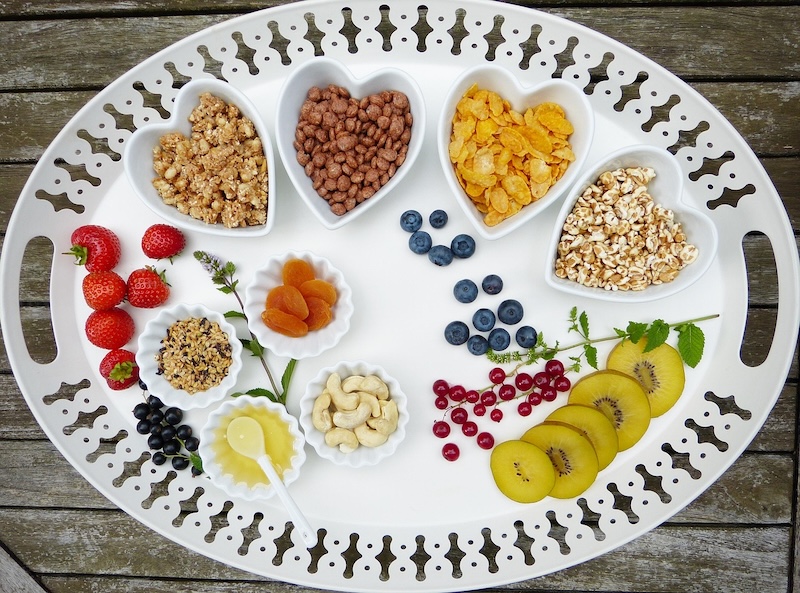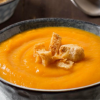Love Your Gut Week runs from 15-21 September…”What’s that?” I think I hear you say. Well, here goes with some information and recipes for you to try:
Our gut microbiome has the power to impact our immunity, heart health, mood, brain health and more. So, it’s important to look after it, and one of the easiest and tastiest ways to do so is through the food we eat. This is why the experts at Love Your Gut have created some new easy and delicious recipes to help support a healthy gut microbiome.
Each is full of gut-friendly ingredients and nutrients, like plant-based foods, fibre and fermented foods, as well as prebiotics, antioxidants, vitamins and minerals. And because eating a variety of foods results in more diverse gut bacteria – in turn helping support physical and mental wellbeing – each recipe includes different microbiome-loving ‘hero’ ingredients.
So, this Love Your Gut Week and beyond, why not give your gut microbiome the love it deserves and treat it to some of these tasty dishes?
Pea, broad bean and cottage cheese pancakes
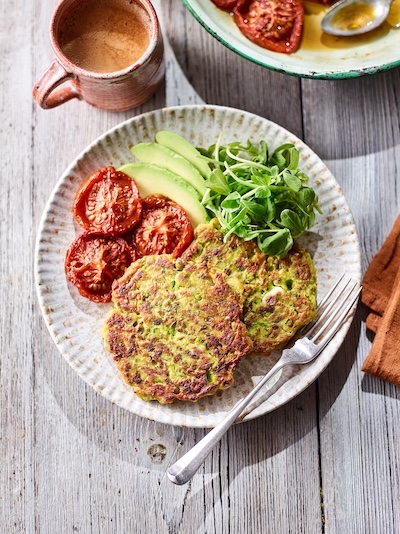
These savoury breakfast pancakes pack in plenty of whole food protein thanks to cottage cheese, eggs and three types of legumes – peas, broad beans and chickpeas – in the form of flour. Fresh herbs push up the plant count even more. Delicious served with just a squeeze of lemon and some pea shoots, or accompany with your choice of roasted tomatoes, sliced avocado, poached eggs or smoked fish.
Gut-friendly hero ingredient: Vegetables such as broad beans help to keep the gut healthy because they contain an abundance of polyphenols, a type of antioxidant. Broad beans are also a particularly good source of flavanols which help keep the balance of microorganisms in the gut healthy, by inhibiting the growth of various pathogens and increasing the populations of beneficial bacteria. (Serves: 4 / Makes 8 pancakes (8 cm in diameter / 1 cm thick / 60 g batter per pancake) Prep time: 10 minutes Cooking time: 15 minutes)
150 g cottage cheese
1 medium egg
50 g gram (chickpea) flour
½ tsp baking powder
100 g frozen peas, defrosted
100 g frozen baby broad beans, defrosted
3 spring onions, chopped
15 g basil, chopped
15 g flat leaf parsley, chopped
1 lemon, zest finely grated
1 tbsp olive oil
To serve:
50 g pea shoots
1 lemon, cut into wedges (the one that has been zested for the recipe is fine)
Plus roasted tomatoes, sliced avocado, poached eggs or smoked fish (optional)
Put the cottage cheese, egg, chickpea flour and baking powder in a blender. Season to taste and blend until smooth, pausing to scrape down the sides if necessary.
Add the peas, broad beans, spring onions, herbs and lemon and pulse until finely chopped and evenly mixed.
Heat 1 tbsp olive oil in a large frying pan, then use half of the mixture to make the first four pancakes, spreading each to about 8 cm in diameter with the back of the spoon. Cook over a medium-low heat for 2 minutes or until the pancakes have browned underneath and are starting to set around the edge.
Flip the pancakes with a palette knife or fish slice and cook the other side until golden brown and springy to the touch.
Keep the first batch warm while you cook four more pancakes, adding a little more oil if needed, then serve with pea shoots, a squeeze of lemon and any other accompaniments you fancy.
Cook’s tip: If you’re serving fewer people, freeze any leftover cooked pancakes. They can be re-crisped from frozen in an air-fryer (180oC / 8 minutes) or defrosted and warmed in the oven (180oC / 160oC fan / gas mark 4 for 10 minutes).
Burmese-style chickpea tofu
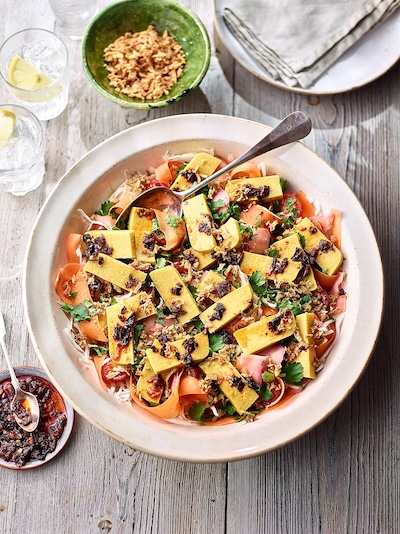
Chickpea flour is used by many different cultures to produce a polenta-like mixture which can be set in a mould. In Myanmar, it’s known as Shan Tofu and is often served sliced as a salad or deep-fried with a dipping sauce. We’ve paired the tofu with some typical Burmese-style salad ingredients, which happen to be high in both prebiotic soluble fibre to feed your microbiome, and insoluble fibre to aid digestion and help you feel fuller for longer.
Gut-friendly hero ingredients: Chickpeas are a significant source of dietary fibre, which acts as a prebiotic by feeding the beneficial bacteria in your gut Turmeric has an anti-inflammatory effect and studies have shown that it can be beneficial for the gut microbiome. (Serves: 4. Prep time: 15 minutes (plus cooling). Cooking time: 10 minutes)
100 g chickpea (gram) flour
½ tsp mild paprika
¼ tsp turmeric
For the salad:
½ white cabbage, very thinly sliced
1 large carrot, peeled into ribbons
250 g cherry tomatoes, sliced
50 g pickled sushi ginger, drained weight
2 tbsp fresh coriander, leaves roughly chopped
2 tbsp crispy onions
2 tbsp crispy chilli oil, or to taste
For the dressing:
1 lime, juiced
2 tsp caster sugar
1 ½ tbsp Thai fish sauce, or use tamari to keep it vegan and gluten-free
1 clove garlic, crushed
Grease a small loaf tin or baking dish (approx. 10 cm x 20 cm) and set aside. Sieve the flour and spices into a bowl, then stir in 160 ml cold water and season to taste with black pepper to make a batter.
Heat 375 ml water in a medium saucepan. Once it starts to simmer, whisk in the chickpea batter, then continue to stir over a medium-low heat until it thickens. Continue to simmer for 8 minutes to cook out the flour, stirring often, then scrape the mixture into the prepared tin and leave to cool completely. The tofu can be stored in the fridge for up to 3 days if needed.
To make the salad, arrange the cabbage, carrot, tomatoes, pickled ginger and coriander on a serving platter. Mix together the dressing ingredients and drizzle over the salad.
Turn out the set tofu and cut into 5 mm slices. Arrange over the salad and garnish with crispy chilli oil and crispy onions.
Baked quinoa rice pudding
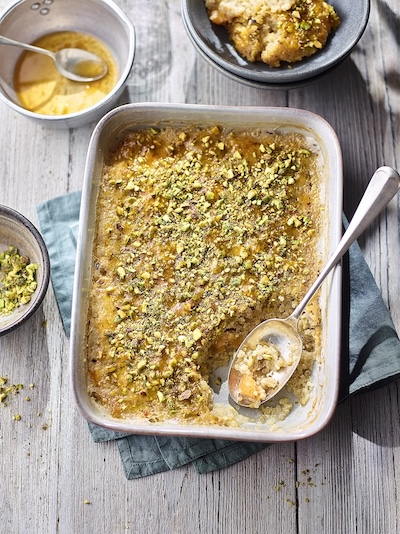

A gut-friendly revamp of the nostalgic comfort food classic baked rice pudding, this recipe swaps traditional rice for quinoa. We’ve also broken with tradition to use almond milk, which complements the pistachios and apricots used to flavour the pudding, plus it makes the pudding suitable for those following a vegan diet. We’ve given instructions for a hands-free long slow cook, as well as a speedier version that requires a little more attention.
Gut-friendly hero ingredients: Quinoa has nearly four times the amount of fibre compared to short grain rice and less than a third of its carbohydrate content. This, in combination with its higher protein levels also means the carbohydrate is absorbed more slowly into the blood stream than the rice version, reducing the likelihood of sugar spikes
Eating a variety of plant-based foods, including fruits like apricots, can support the gut microbiome – as they are rich in fibre.
Serves: 4 Prep time: 5 minutes. Cooking time: 1 hour 15 minutes (or 25 minutes – see tip)
150 g quinoa
75 g pistachio nuts, chopped
75 g dried apricots, chopped
400 ml almond milk
400 ml tin light coconut milk
60 g caster sugar
1 tsp vanilla extract
¼ tsp nutmeg, freshly ground
1 tbsp apricot jam
1 tbsp lemon juice
Method:
Preheat the oven to 170°C (150oC fan) / gas mark 3.
Put the quinoa in a bowl and cover with cold water. Give it a good stir, then drain through a sieve. Rinse and drain a few more times until the water runs clear, then drain well and return to the bowl.
Reserve 25 g of the pistachios for the topping. Add the rest to the bowl with the dried apricots, almond milk, coconut milk, sugar, vanilla and nutmeg.
Stir well, then pour the mixture into a 1 litre baking dish (approx. 20 x 25 cm), ensuring the apricots are evenly distributed.
Bake for 1 hour 15 minutes, or until the top is golden brown and the pudding has set with a slight wobble in the middle. Leave to stand for 15 minutes.
Warm the apricot jam and lemon juice together in a small pan until runny, then drizzle over the pudding. Crush the reserved pistachios and sprinkle over the pudding before serving.
Cook’s tip: If you’re short on time (and don’t mind sacrificing the traditional golden skin!), the pudding can be cooked in a saucepan: simmer gently for 25 minutes, stirring every few minutes to ensure it doesn’t stick.
The Seasoned Gastronome

